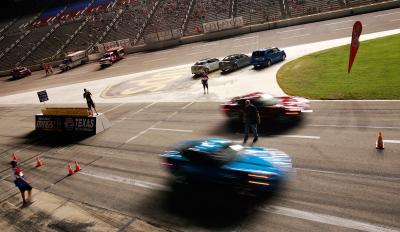
Edelbrock Automotive started as a Los Angeles repair shop in 1934 and has grown into one of the best-known aftermarket auto and motorcycle parts manufacturers in the United States. The company produces performance-enhancing cylinder heads, carburetors, super chargers, complete engines and engine components for both the street, track and drag strip, but the company’s most popular products may be carburetors. Carburetors are the traditional way to convert liquid gasoline into an aerosol in internal combustion engines.
Edelbrock makes two carburetor styles for automobiles called the Performer Series and the Thunder Series. The company also builds Performer Series Marine Carburetors. Six of the nine Performer Series automotive carburetors are street legal on most cars. The Model 1400 is almost identical to mid-1970s General Motors carburetors and is street legal only for cars manufactured before 1980. Two of the carburetors are for cars that may only be legally operated off road or on a track.
The Model 1407, which is designed to pass 750 cubic feet of air per minute into an auto engine, is a high performance, street legal carburetor for engines with displacements of 350 – 502 cubic inches. This lightweight, aluminum carburetor using devices called metering rods to transition between carburetor circuits. Circuits are the range of power associated with another device called carburetor jets. The metering rods eliminate backfiring and other problems caused by the transition from one jet to another. The 1407 also holds tune, or stays in tune, better than competing carburetors.
Today, most gasoline engines use a computer controlled technology called Electronic Fuel Injection, or EFI, to control the atomization of gasoline. Carburetors are widely considered to be an obsolete technology. But, the attraction of carburetors for auto enthusiasts is their relative simplicity. Tuning an EFI requires a lap top computer and the programming competency to undue factory settings that have been optimized for fuel efficiency, quiet and other social concerns. Tuning a carburetor is accomplished with simple tools and usually only involves adjusting the engine idle speed and the low speed gas-air ratio and changing the jets.
Jets, simply stated, are tubes inside the carburetor. The diameter of the tubes determines the amount of gas that can flow through them and so they effect the ratio of gas and air that explodes inside an engine. All Edelbrock jets have a “120” prefix and the last three digits of the jet, minus 300, is the actual size of the jet in thousandths of an inch. For example, an Edelbrock “120-398” is a jet for any Edelbrock carburetor that has a diameter of .098 inch. The 1407 uses a primary jet with a diameter of .113 inch and a secondary jet with a diameter of .107 inch. Tuning these carburetors usually involves changing only the primary jet, Edelbrock recommends a .107 inch primary jet for very lean tunes, with a maximum of air and aminimum of gasoline and a .116 jet for richer tunes with a higher percentage of gas in the mix.